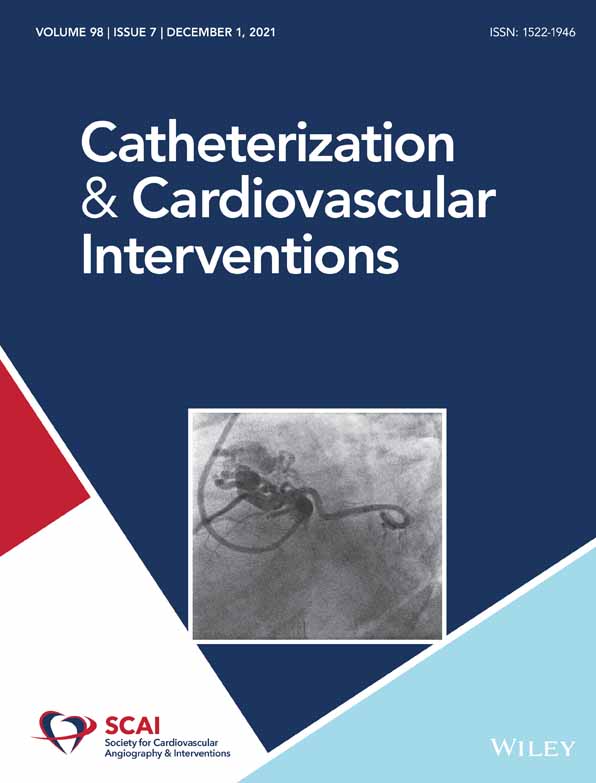Same day discharge after chronic total occlusion interventions: A single center experience
Abstract
Objectives
To assess the feasibility and safety of same day discharge (SDD) after chronic total occlusion (CTO) percutaneous coronary intervention (PCI).
Background
CTO PCI has been associated with higher complication rates and procedural and hospitalization costs. Shortening post-PCI hospitalization length not only increases the patients' comfort but at the same time it consists an important part of cost reduction policies.
Methods
We retrospectively compared the 30-day outcomes of patients who underwent CTO PCI at the Red Cross Hospital, Greece between January 2016 and June 2019 and underwent SDD versus non-SDD. Major adverse cardiovascular events (MACE) were defined as the composite of death, myocardial infarction, urgent repeat target vessel revascularization, tamponade, and stroke.
Results
A total of 173 patients (mean age 63.7 ± 8.9 years) were included, of whom 51 (30%) underwent SDD. SDD patients were less likely to have diabetes mellitus (51 vs. 31%, p = .015), arterial hypertension (89 vs. 67%, p < .001), and acute coronary syndrome presentation (39.7 vs. 21.6%, p = .022), compared with non-SDD patients. Forearm access was used in all SDD patients and in 83% of the non-SDD patients. The 30-day incidence of MACE was 0% in the SDD group and 1.6% in the non-SDD group. Multivariable analysis showed that diabetes mellitus and longer procedural time were associated with lower probability of SDD (OR: 0.34, 95% CI: 0.15, 0.73 and OR: 0.29, 95% CI: 0.12, 0.71, respectively).
Conclusions
SDD appears to be feasible and safe in selected patients undergoing an uncomplicated CTO PCI through forearm approach.
Open Research
DATA AVAILABILITY STATEMENT
The data that support the findings of this study are available from the PROGRESS CTO Registry. Restrictions apply to the availability of these data, which were used under license for this study. Data are available from the authors with the permission of PROGRESS CTO Registry Investigators.




